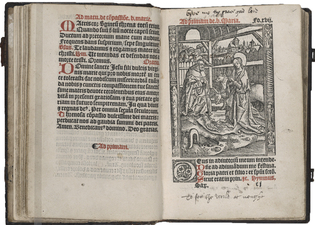 loading
loading
Arts & CultureSt. Thomas More’s last bookObject lesson: the prayer book that More kept in the Tower of London includes his own hand-written prayers. Raymond Clemens is the curator of early books and manuscripts at the Beinecke Rare Book and Manuscript Library.  Beinecke Rare Book and Manuscript LibraryMore recorded his own prayers in the one book he was allowed to keep while he was imprisoned in the Tower of London, awaiting death—a prayer book. His first annotations are shown below. View full imageOne of the most remarkable objects in the Beinecke Library is the prayer book that Thomas More read and annotated while he was a prisoner in the Tower of London, awaiting execution on the order of King Henry VIII. These annotations, which reveal More’s struggle to face death for the sake of his beliefs, are among his most popular and moving verses. More was imprisoned for resisting Henry VIII’s plans to make himself head of the Church in England in order to have his marriage to Catherine of Aragon invalidated and marry Anne Boleyn. Henry had named More to the key office of Lord Chancellor in 1529, but More resigned in May 1532 over his differences with the king. He was imprisoned in April 1534, after new articles of treason had been promulgated by Henry’s chief minister, Thomas Cromwell. While he was in the Tower of London, More was at first afforded some luxuries, such as books and writing materials—but they were taken away when he was found to have written to a fellow prisoner, Bishop John Fisher. More wrote his final letters to his daughter with pieces of coal on scraps of paper. Stripped of all books except his prayer book, More began to wrestle with the prospect of impending martyrdom. According to a letter written by his oldest daughter, Margaret, More did not fear death, but he was afraid that during the pain of torture he would renounce his faith and deny Christ, as St. Peter had. In search of solace and strength he began recording his own prayers in the margins of the prayer book. His annotations begin:
More was beheaded on July 6, 1535; his head was parboiled and placed on a stake for public viewing. In 1935, he was canonized by Pope Pius XI. It is not known how the prayer book survived after More was executed. It first surfaced in an exhibition in 1929 and was purchased by the Beinecke Library in 1965. It actually comprises two printed books: a book of Hours and a Psalter. Printed in 1522 and 1525 in Paris for the English market, the books retain their original simple black binding. The annotations on the book of Hours were gathered by More’s nephew, William Rastell, and published in his 1557 edition of the English works of Thomas More. (Starting in 1958, Yale’s St. Thomas More Project, an international scholarly collaboration, edited and published 16 volumes of More’s writings; they are all still in print.) These verses show More wrestling with, and reconciling himself to, a painful death and the possible ruin of his family for his religious convictions. They are his best-known spiritual writings.
|
|
2 comments
-

crazylikeknoxes, 9:41am May 20 2015 |  Flag as inappropriate
Flag as inappropriate
-

William M. Klimon, 4:43pm May 21 2015 |  Flag as inappropriate
Flag as inappropriate
The comment period has expired."Give me the grace good Lord ***"
Those words are on the back of a St. Thomas More holy card under the caption "Lawyer's Prayer" and I've prayed them every morning before work for over ten years. They always struck as strange words for a lawyer to pray and I have wondered about their origin (after all, holy cards don't come with an imprimatur or cite sources). Now I know and understand.
Also to be noted, the Yale University Press published a photographic facsimile edition of St. Thomas's prayer book in 1969. It's now out of print but available on the used book market.